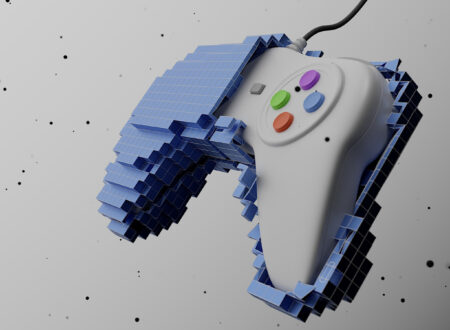The world of gaming has transformed dramatically over the past few decades. What started as pixelated screens and simple sound effects has evolved into sprawling, life-like virtual worlds powered by cutting-edge technology. Gaming is no longer just a hobby — it’s a cultural phenomenon, an art form, and even a professional career for many.
In this blog, we’ll take you on a journey through the fascinating evolution of video games, from their humble beginnings to today’s ultra-realistic experiences.
1. The Birth of Gaming: The 8-Bit Era
The story of gaming begins in the late 1970s and early 1980s with 8-bit graphics and arcade classics. This era introduced the world to simple, pixel-based games that were easy to play but hard to master.
Arcade Culture
Games like Pac-Man (1980), Space Invaders (1978), and Donkey Kong (1981) became household names. These games were built on basic 8-bit hardware, offering blocky visuals and minimal sound effects. But they had something far more important — addictive gameplay and massive cultural appeal.
The Nintendo Revolution
The release of the Nintendo Entertainment System (NES) in 1983 took gaming into homes around the world. Titles like Super Mario Bros., The Legend of Zelda, and Metroid introduced players to vibrant worlds, memorable characters, and the concept of “levels” and “boss fights.” Despite the limitations of 8-bit graphics, these games sparked the imaginations of millions.
2. 16-Bit, 3D Worlds & the Rise of Consoles
The late 1980s and 1990s witnessed the rise of 16-bit consoles like the Super Nintendo (SNES) and Sega Genesis, taking gaming to new heights. Colors became richer, music more dynamic, and gameplay more complex.
The 16-Bit Revolution
Games like Sonic the Hedgehog, Street Fighter II, and Super Mario World pushed the boundaries of storytelling and visuals. The 16-bit era also introduced gamers to larger maps, side-scrolling adventures, and iconic characters.
The Leap to 3D
In the mid-90s, gaming made a massive leap with the release of Sony’s PlayStation and Nintendo 64. This was the dawn of 3D gaming. Titles like Super Mario 64, Tomb Raider, and Final Fantasy VII broke new ground by allowing players to explore fully rendered three-dimensional environments.
This era marked the beginning of cinematic storytelling in games. Cutscenes, voice acting, and deep narratives became a standard part of the gaming experience.
3. Online Play, Open Worlds & Next-Gen Graphics
The early 2000s and 2010s were all about expansion and connectivity. Consoles like the PlayStation 2, Xbox, and later the PS3 and Xbox 360 revolutionized how we interacted with games.
Online Multiplayer & Esports
The introduction of online multiplayer changed everything. Games like Halo 2, Call of Duty, and World of Warcraft created global communities of players who could compete, cooperate, and socialize in real time. Esports started to gain traction, turning gaming into a spectator sport with massive tournaments and cash prizes.
Open World Games
Developers also started creating massive, open-world environments where players could roam freely. Grand Theft Auto V, The Elder Scrolls V: Skyrim, and The Witcher 3 became iconic for their immersive worlds, side quests, and cinematic quality.
The Push for Realism
With the rise of HD graphics, motion capture technology, and realistic physics engines, the gaming experience became visually stunning. Facial animations, weather systems, and lifelike environments began blurring the line between games and reality.
4. Ultra-Realism, Virtual Reality & The Future of Gaming
We are now living in the most advanced era of gaming yet. Today’s technology delivers near-photorealistic graphics, virtual reality, and seamless online experiences.
4K, Ray Tracing & Next-Gen Consoles
The release of PlayStation 5, Xbox Series X, and high-end PC gaming rigs has introduced features like ray tracing (realistic light reflections), 4K resolution, and near-instant load times. Games like Horizon Forbidden West, Cyberpunk 2077, and Red Dead Redemption 2 showcase breathtaking graphics that rival blockbuster movies.
Virtual Reality & Augmented Reality
VR gaming has taken immersion to another level. Devices like the Oculus Quest 2 and PlayStation VR allow players to physically step into virtual worlds. Games like Beat Saber and Half-Life: Alyx demonstrate how VR has evolved from a gimmick to a full-fledged platform.
Augmented Reality (AR) games, like Pokémon GO, blend virtual elements with the real world, changing how people interact with their environment.
AI & Interactive Storytelling
Artificial Intelligence is now enhancing game development. NPCs (non-playable characters) behave more intelligently, and some games adapt dynamically to your choices, offering a more personalized experience.
The Metaverse & Cloud Gaming
The future points toward cloud gaming platforms like NVIDIA GeForce Now, Xbox Cloud Gaming, and the concept of a gaming metaverse — interconnected virtual spaces where players can live, play, and even earn money.
Final Thoughts
Gaming has evolved from 8-bit pixels to ultra-realistic, immersive worlds. What began as a simple pastime in arcades is now a billion-dollar industry influencing art, entertainment, technology, and culture.
And the best part? The evolution is far from over. As technology continues to grow, so will the boundaries of what’s possible in gaming.
So whether you grew up on 8-bit classics or you’re exploring next-gen virtual worlds today, one thing remains true — gaming will always be a space where imagination meets innovation.




